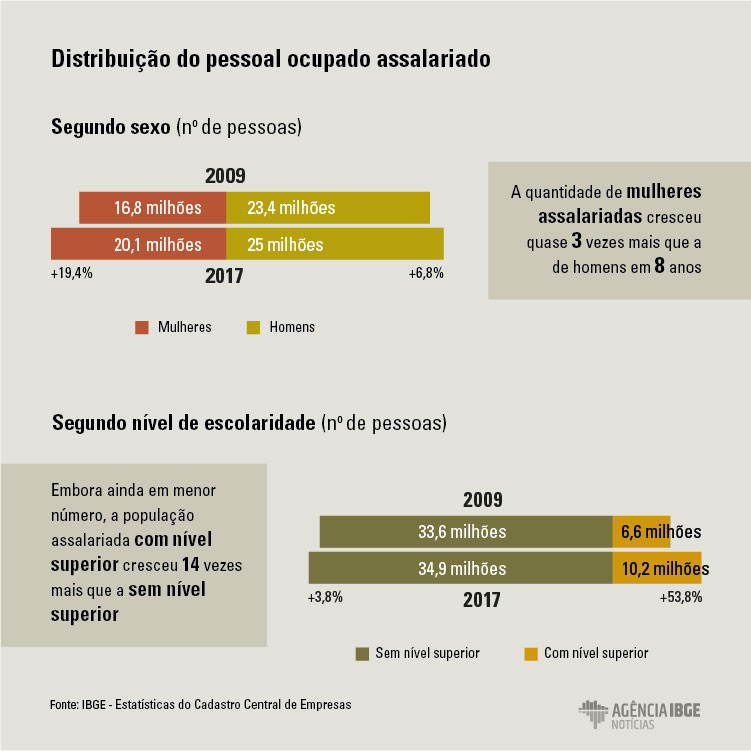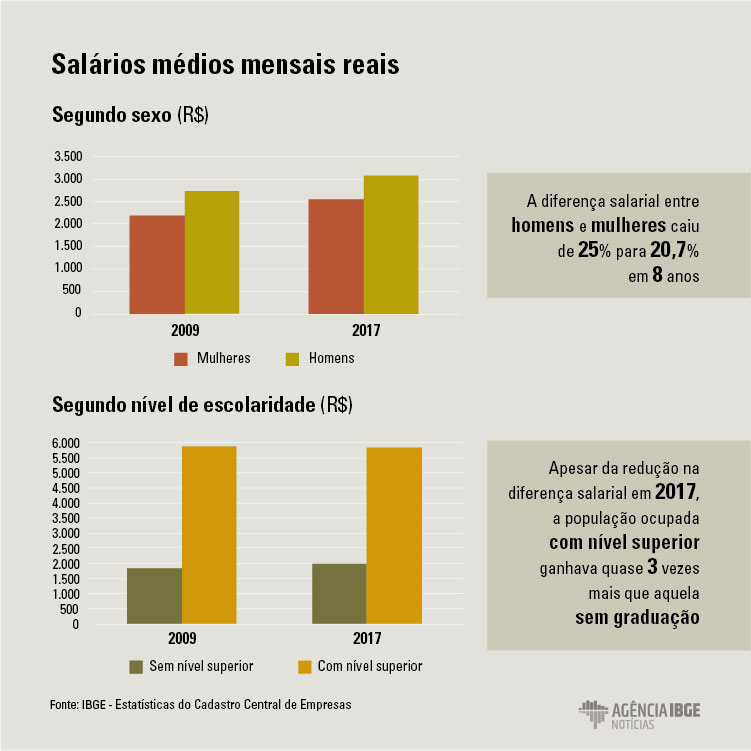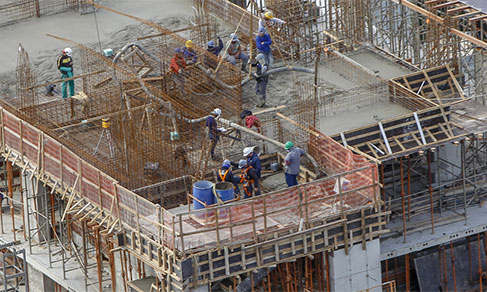Cadastro Central de Empresas
Number of enterprises drops for second year, returns to level of beginning of decade
June 26, 2019 10h00 AM | Last Updated: July 02, 2019 02h55 PM

The number of enterprises in activity in the country was 5 million in 2017, the worst result since 2010, when it consisted of 5,1 million. Since the beginning of the economic crisis in 2014, the number of enterprises has decreased by 74.2 thousand and the salaried population, by 3.2 millions.
These results, released today by the IBGE, are from the Central Register of Enterprises (CEMPRE), which also includes organizations of public administration and non-profit entities.
The study shows that between 2007 and 2012, there was a continuous progression in the number of enterprises, from 4.4 million to 5.4 million. In 2014, however, that number dropped by 288.9 thousand organizations and, even with the small increase of 11.6 thousand in 2015, in the two following years the number started to decrease again, by 64.4 thousand in 2016 and 21.5 thousand in 2017.
Salaried employed persons expanded in every year between 2007 and 2014, when 11.6 million new formal jobs were created, amounting to 48.3 million, the highest level in history. But in 2015 and 2016, that movement was reversed with the reduction of 3.7 million positions. That number rose again in 2017, with 550.7 thousand of new positions, resulting in 45.1 million of employed persons.
“There has been an important reduction in the last few years and it is difficult for the enterprises to establish themselves and create new jobs. For this reason, not only with the number of enterprises but also with the salaried persons, we have been at the same level as in the beginning of the last decade” said the survey analyst Denise Guichard.

Salary differences between men and women decrease, but still represent 20.7%
The study also showed that the participation of women in the total employed people increased from 41.9% to 44.6% between 2009 and 2017. According to Denise, in 2017, fields where there is a predominance of female employees have been presenting biggest increases in number of persons. For example, in 2017, there was an increase by 550.7 thousand salaried employed persons. From those, 390 thousand jobs were in the health field and social services, whereas education corresponded to 247.4 thousand.

That fact has been contributing to the reduction of the wage gap between men and women, which went from 25% to 20.7%, between 2009 and 2017. Even so, while men’s average monthly wage was R$3,086.00, women’s was R$2,555.84.
“Women have been achieving higher real raises than men. If we put together the increase in female labor with the creation of new job positions in the field where they predominate, their participation and wage has increased in real terms”, explains Denise.
Salaries of those who have completed higher education is almost three times bigger than those who have not.
The survey revealed that the percentage of employed persons with higher education increased from 16.5% to 22.6%, between 2009 and 2017. It represented an advance of 53.8% of people with higher education, going from 6.6 million to 10.2 million people. The average wage of those who have higher education were almost three times bigger than those who do not have this level of education. In 2017, the average monthly wage ranged from R$1,971.82, among people without higher education, to R$5,832.38, among people with higher education.





















